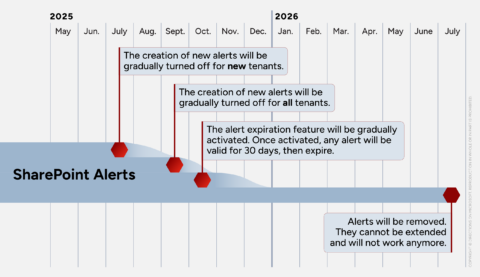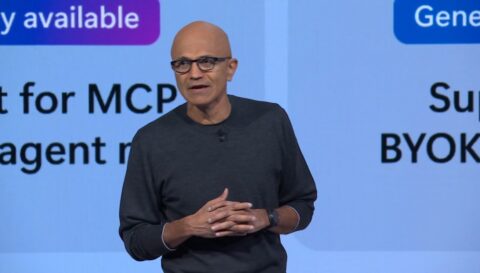Updated: April 8, 2024 (August 1, 2023)
BlogMicrosoft gives some customers a 'very premium' way to run Office on AWS

The August 1 Microsoft product licensing terms are out. And they include a small but noteworthy concession for organizations stung by Microsoft licensing changes dating back to 2019 which made running Microsoft software on certain non-Microsoft clouds more expensive.
By design, Microsoft’s 2019 changes around its bring-your-own-license (BYOL) terms made contracts more expensive for those interested in running Microsoft software on anything but Azure. Microsoft designated AWS, Google and Alibaba as “listed providers.” And customers who ran Windows, Office, SQL Server and other Microsoft software on those listed providers’ clouds would need to pay substantially more than they would if they ran those same applications and operating systems on Azure.
A number of customers didn’t realize the extent of the impact until their contracts with Microsoft were up for renewal. Once they did, some customers and partners took to legal channels, both in the EU and the U.S., to try to force Microsoft to level the playing field.
Microsoft announced, with much fanfare, its European Cloud Principles in 2022, which Microsoft officials said would provide customers and partners who wanted to run Microsoft software on certain non-Microsoft clouds, with some concessions. But again, customers who wanted to use AWS, Google and/or Alibaba were left out.
This year, in the U.S., the Federal Trade Commission has been soliciting public comments on the business practices of cloud computing providers which could impact competition and security. Google, various trade associations, and a number of customers and partners used the commenting opportunity to complain about Microsoft’s licensing changes.
On August 1, Microsoft made public, as it does on the first day of each month, a number of licensing changes. And whether prompted by the FTC commenting process or not, Microsoft made a concession to those running Office on AWS. The change:
“Beginning August 1, 2023, users with specific licenses may run Microsoft 365 Apps for enterprise/business, Microsoft Project, and Microsoft Visio on Amazon WorkSpaces. The licenses that will be eligible under this revised policy include Microsoft 365 E3/E5/A3/A5 and Microsoft 365 Business Premium. If you currently have any of these licenses, starting from August 1, you will be able to utilize these Microsoft applications on Amazon WorkSpaces virtual desktop infrastructure.”
Directions on Microsoft analyst Wes Miller said, “this gives customers a very premium way to run ‘Office’ on WorkSpaces, partially addressing some issues with Microsoft on AWS.”
However, it’s still a pricey solution, Miller noted.
“You’ll need a Microsoft 365 E3 or E5 subscription for every user accessing Microsoft 365 Apps for enterprise (Office) on WorkSpaces,” he explained. “Not Microsoft 365 licensed separately. Not Office 365 E3. You need Microsoft 365 E3+, even if you don’t need EMS (Enterprise Mobility and Security). And you still need VDA (Virtual Desktop Access) for your WorkSpaces users.”
In short, Microsoft is still offering far better terms with Azure Virtual Desktop (AVD) or Windows 365 than they do for AWS, Google or Alibaba, Miller said.
What Options Do Customers Have?
What can and should customers affected by the 2019 licensing changes do at this point? Miller said most customers failed to act between 2019 to 2022, which was when they had any chance to contractually fight these changes during their Enterprise Agreement renewals. Currently, organizations can stay and pay more; leave and go to a hosting provider that isn’t a “listed provider” (but which still is likely more expensive than going with Microsoft); or do what Microsoft is hoping and move to Azure.
“The reality is that if an organization is staying on AWS, GCP, or Alibaba, they should have a software asset management process in place for all of their Microsoft software in those three clouds, understand what the rules are today, be prepared to pay more to stay there, and have evidence to show Microsoft that they’re staying above board,” Miller advised.
Customers running Microsoft software on Microsoft’s biggest competitors’ clouds should anticipate costs will rise significantly through 2025, Miller said. They also should expect confusion over how to do what’s right, as fewer people understand how to navigate “the old way,” and auditors don’t know how to get it right.
“After October 2025, Office, in particular, will get harder to obtain, as SPLA (Service Provider License Agreement) rules tighten again,” Miller warned.
Related Resources
Microsoft’s 2019 outsourcing rules changes explained (Directions members only)
October 2022: Microsoft makes some outsourcing and hosting concessions
Publicly submitted comments responding to the FTC’s request
Microsoft Product Licensing Terms Changes for August 1, 2023
Microsoft 365 Apps OK for Amazon VDI (Directions members only)















